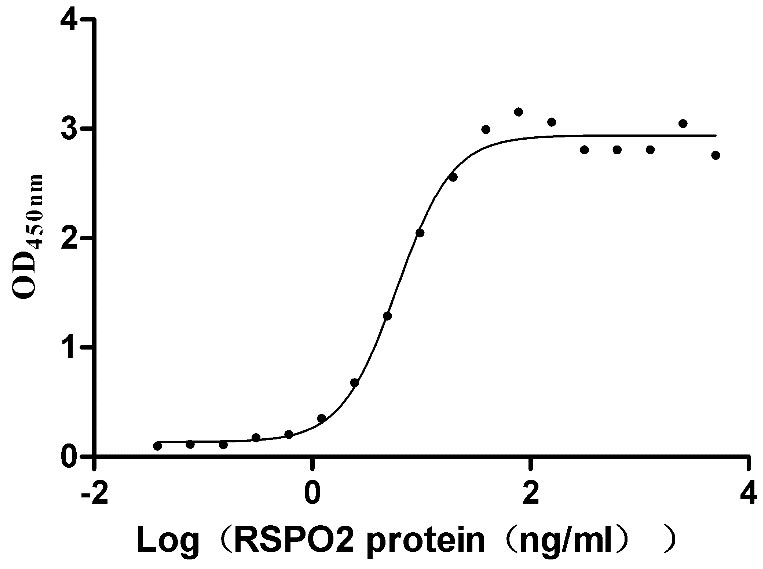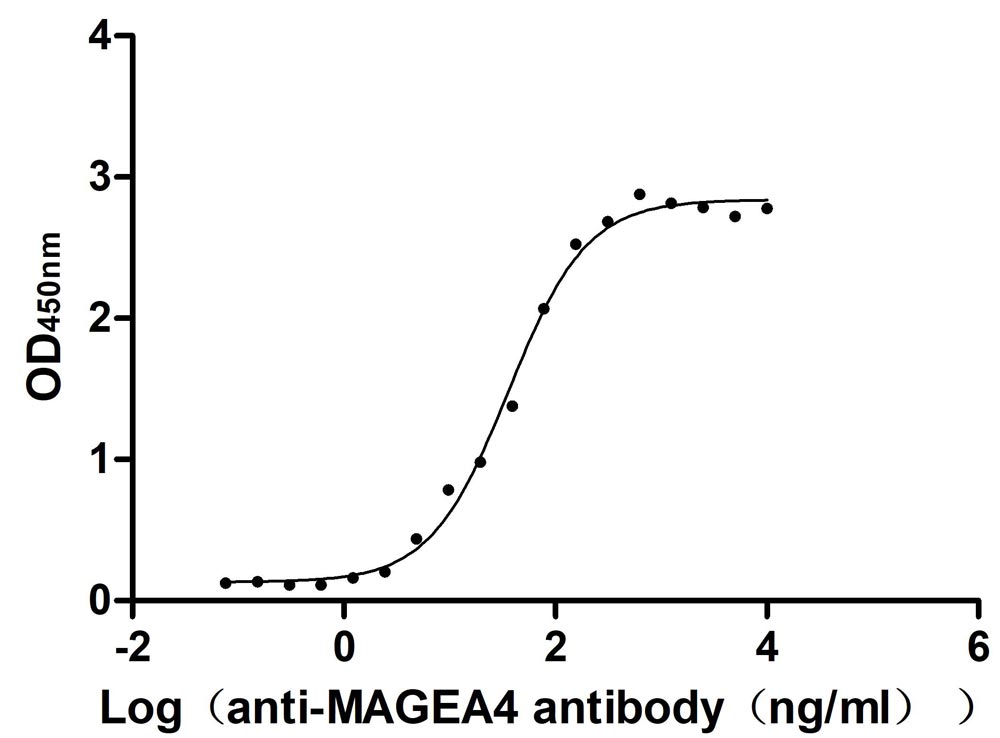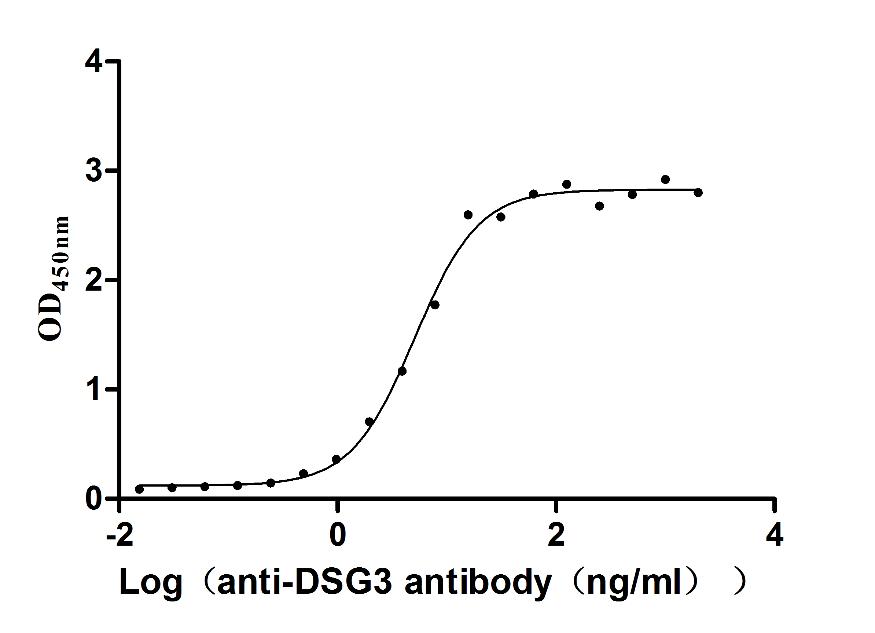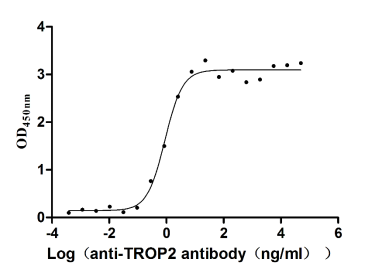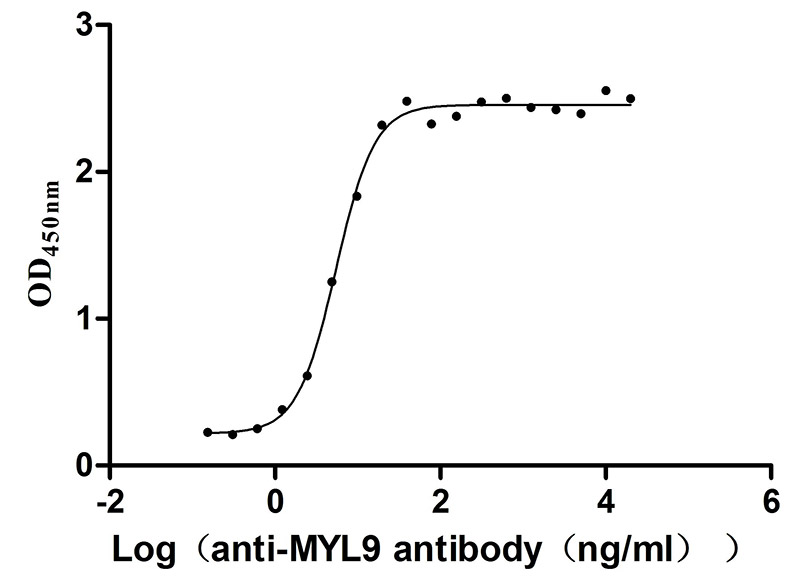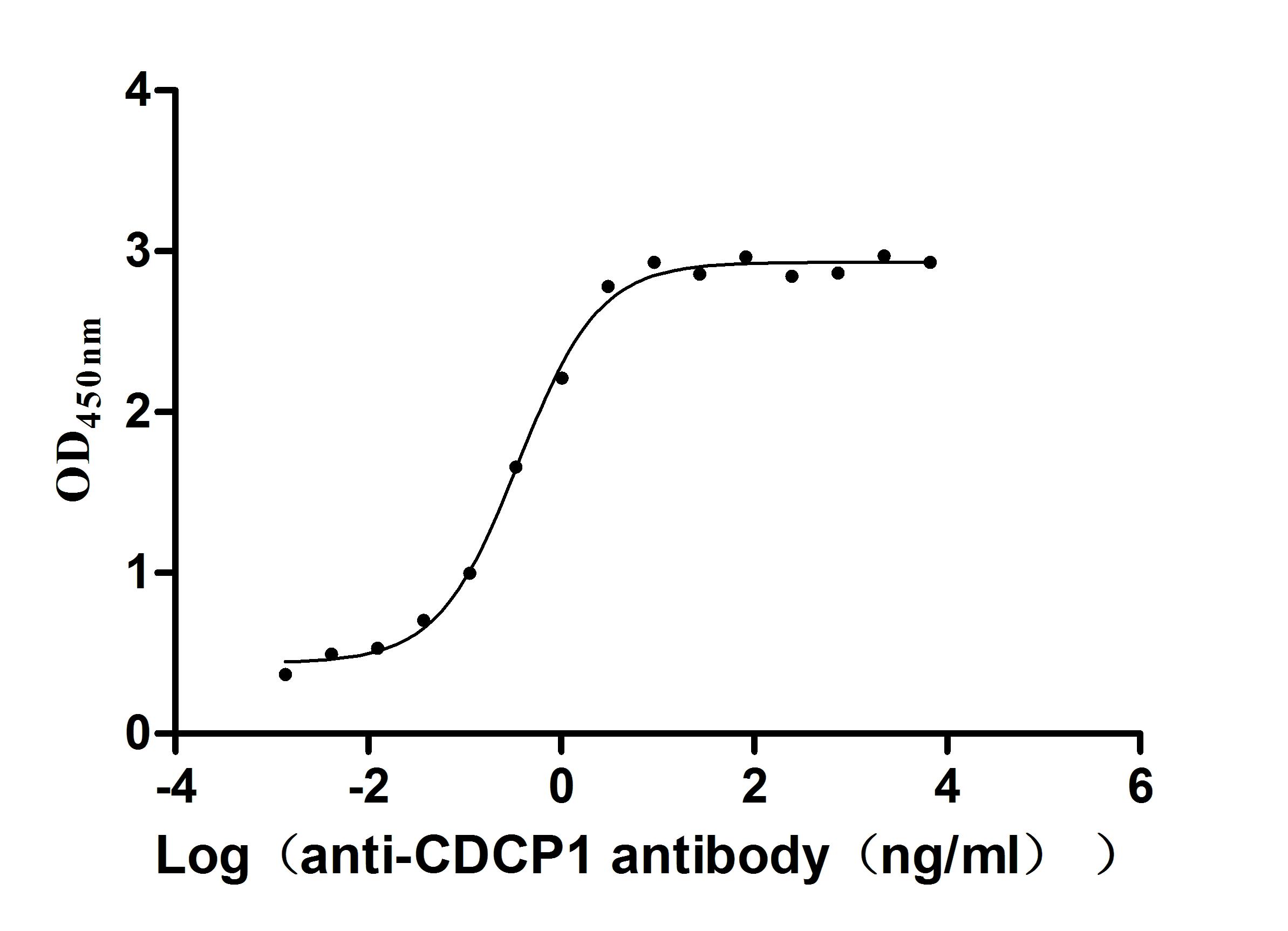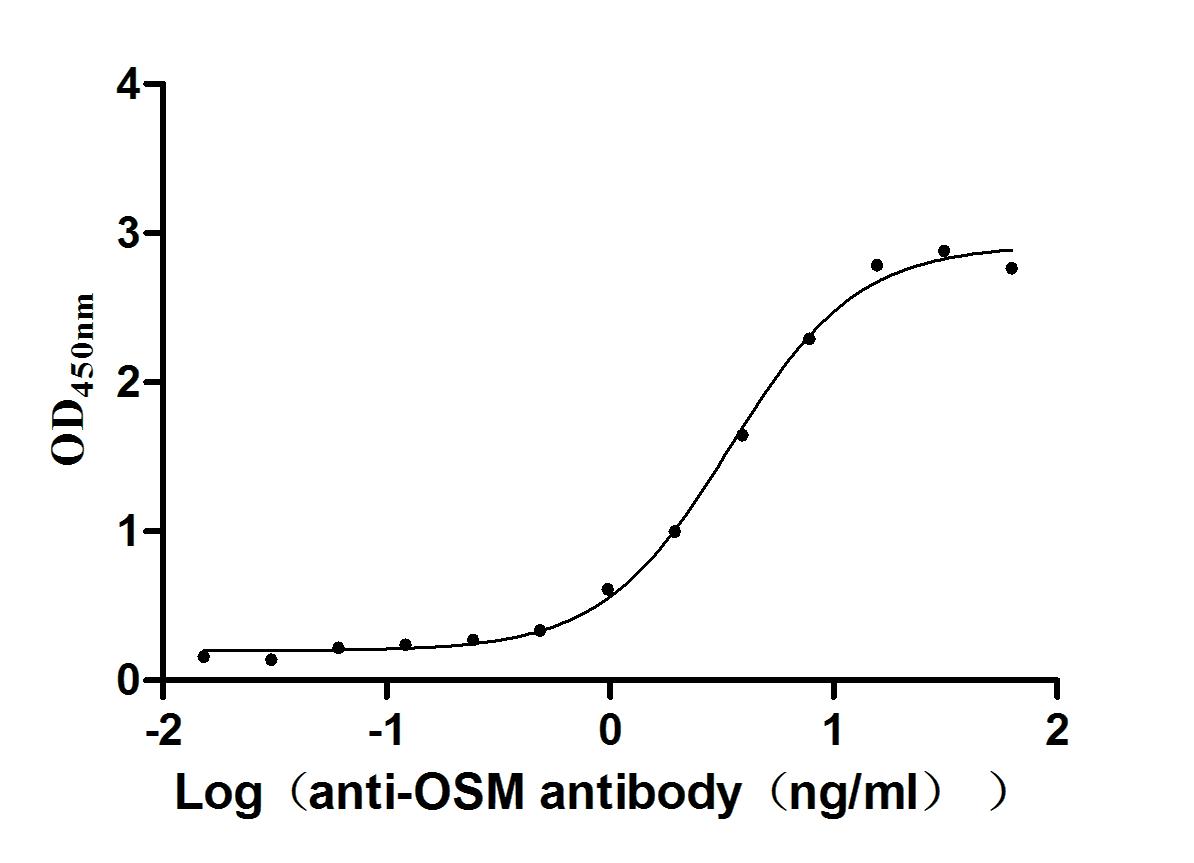Recombinant Mouse 5'-AMP-activated protein kinase subunit beta-2 (Prkab2)
-
中文名稱:小鼠Prkab2重組蛋白
-
貨號(hào):CSB-YP747449MO
-
規(guī)格:
-
來源:Yeast
-
其他:
-
中文名稱:小鼠Prkab2重組蛋白
-
貨號(hào):CSB-EP747449MO
-
規(guī)格:
-
來源:E.coli
-
其他:
-
中文名稱:小鼠Prkab2重組蛋白
-
貨號(hào):CSB-EP747449MO-B
-
規(guī)格:
-
來源:E.coli
-
共軛:Avi-tag Biotinylated
E. coli biotin ligase (BirA) is highly specific in covalently attaching biotin to the 15 amino acid AviTag peptide. This recombinant protein was biotinylated in vivo by AviTag-BirA technology, which method is BriA catalyzes amide linkage between the biotin and the specific lysine of the AviTag.
-
其他:
-
中文名稱:小鼠Prkab2重組蛋白
-
貨號(hào):CSB-BP747449MO
-
規(guī)格:
-
來源:Baculovirus
-
其他:
-
中文名稱:小鼠Prkab2重組蛋白
-
貨號(hào):CSB-MP747449MO
-
規(guī)格:
-
來源:Mammalian cell
-
其他:
產(chǎn)品詳情
-
純度:>85% (SDS-PAGE)
-
基因名:
-
Uniprot No.:
-
別名:Prkab25'-AMP-activated protein kinase subunit beta-2; AMPK subunit beta-2
-
種屬:Mus musculus (Mouse)
-
蛋白長度:full length protein
-
表達(dá)區(qū)域:1-271
-
氨基酸序列MGNTTSERVS GERHGAKAAR AEGGGHGPGK EHKIMVGSTD DPSVFSLPDS KLPGDKEFVP WQQDLDDSVK PAQQARPTVI RWSEGGKEVF ISGSFNNWST KIPLIKSHND FVAILDLPEG EHQYKFFVDG QWVHDPSEPV VTSQLGTINN LIHVKKSDFE VFDALKLDSM ESSETSCRDL SSSPPGPYGQ EMYVFRSEER FKSPPILPPH LLQVILNKDT NISCDPALLP EPNHVMLNHL YALSIKDSVM VLSATHRYKK KYVTTLLYKP I
-
蛋白標(biāo)簽:Tag?type?will?be?determined?during?the?manufacturing?process.
The tag type will be determined during production process. If you have specified tag type, please tell us and we will develop the specified tag preferentially. -
產(chǎn)品提供形式:Lyophilized powder
Note: We will preferentially ship the format that we have in stock, however, if you have any special requirement for the format, please remark your requirement when placing the order, we will prepare according to your demand. -
復(fù)溶:We recommend that this vial be briefly centrifuged prior to opening to bring the contents to the bottom. Please reconstitute protein in deionized sterile water to a concentration of 0.1-1.0 mg/mL.We recommend to add 5-50% of glycerol (final concentration) and aliquot for long-term storage at -20℃/-80℃. Our default final concentration of glycerol is 50%. Customers could use it as reference.
-
儲(chǔ)存條件:Store at -20°C/-80°C upon receipt, aliquoting is necessary for mutiple use. Avoid repeated freeze-thaw cycles.
-
保質(zhì)期:The shelf life is related to many factors, storage state, buffer ingredients, storage temperature and the stability of the protein itself.
Generally, the shelf life of liquid form is 6 months at -20°C/-80°C. The shelf life of lyophilized form is 12 months at -20°C/-80°C. -
貨期:Delivery time may differ from different purchasing way or location, please kindly consult your local distributors for specific delivery time.Note: All of our proteins are default shipped with normal blue ice packs, if you request to ship with dry ice, please communicate with us in advance and extra fees will be charged.
-
注意事項(xiàng):Repeated freezing and thawing is not recommended. Store working aliquots at 4°C for up to one week.
-
Datasheet :Please contact us to get it.
靶點(diǎn)詳情
-
功能:Non-catalytic subunit of AMP-activated protein kinase (AMPK), an energy sensor protein kinase that plays a key role in regulating cellular energy metabolism. In response to reduction of intracellular ATP levels, AMPK activates energy-producing pathways and inhibits energy-consuming processes: inhibits protein, carbohydrate and lipid biosynthesis, as well as cell growth and proliferation. AMPK acts via direct phosphorylation of metabolic enzymes, and by longer-term effects via phosphorylation of transcription regulators. Also acts as a regulator of cellular polarity by remodeling the actin cytoskeleton; probably by indirectly activating myosin. Beta non-catalytic subunit acts as a scaffold on which the AMPK complex assembles, via its C-terminus that bridges alpha (PRKAA1 or PRKAA2) and gamma subunits (PRKAG1, PRKAG2 or PRKAG3).
-
基因功能參考文獻(xiàn):
- AMPK beta1beta2 have a role in preventing myopathy due to loss of capillary density in nonpostural muscles PMID: 24522207
- The beta2 subunit plays an important role in regulating glucose, glycogen, and lipid metabolism during metabolic stress. beta2 mutant animals failed to maintain euglycemia and muscle ATP levels during fasting. PMID: 22586267
- Data show that beta1beta2M-KO mice are physically inactive and have a drastically impaired capacity for treadmill running that is associated with reductions in skeletal muscle mitochondrial content. PMID: 21896769
- Deletion of AMPK beta2 reduces AMPK activity in skeletal muscle resulting in impaired exercise capacity. PMID: 20855892
- Germline deletion of either AMPK beta1 or beta2 subunit isoforms resulted in reduced trabecular bone density and mass, but without effects on osteoclast (OC) or osteoblast (OB) numbers. PMID: 19723702
- Results suggest that p38 MAPK is not a downstream component of AMPK-mediated signaling in skeletal muscle. PMID: 17709097
顯示更多
收起更多
-
蛋白家族:5'-AMP-activated protein kinase beta subunit family
-
數(shù)據(jù)庫鏈接:
Most popular with customers
-
Recombinant Human E3 ubiquitin-protein ligase ZNRF3 (ZNRF3), partial (Active)
Express system: Mammalian cell
Species: Homo sapiens (Human)
-
Recombinant Human Melanoma-associated antigen 4 (MAGEA4) (Active)
Express system: Mammalian cell
Species: Homo sapiens (Human)
-
Recombinant Human Epithelial discoidin domain-containing receptor 1 (DDR1), partial (Active)
Express system: Mammalian cell
Species: Homo sapiens (Human)
-
Recombinant Human Desmoglein-3 (DSG3), partial (Active)
Express system: Baculovirus
Species: Homo sapiens (Human)
-
Recombinant Human Tumor-associated calcium signal transducer 2 (TACSTD2), partial (Active)
Express system: Mammalian cell
Species: Homo sapiens (Human)
-
Recombinant Human Myosin regulatory light polypeptide 9 (MYL9) (Active)
Express system: Yeast
Species: Homo sapiens (Human)
-
Recombinant Human CUB domain-containing protein 1 (CDCP1), partial (Active)
Express system: Mammalian cell
Species: Homo sapiens (Human)
-
Recombinant Human Oncostatin-M (OSM), partial (Active)
Express system: Mammalian cell
Species: Homo sapiens (Human)


